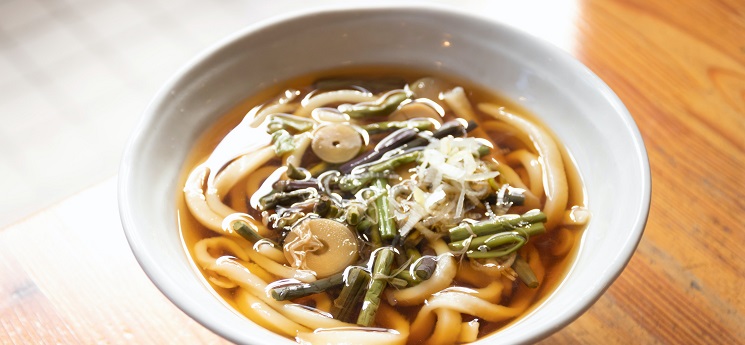A bitter pill, sour grapes and sweet nothings – taste is not only all about pleasure. This important sense also aided our evolution as a species as it allowed us to test the food that we were about to consume. A bitter or sour taste was an indication of poisonous inedible plants or protein-rich food that had started to rot, while sweet and salty were often a sign of food rich in nutrients. Nowadays, we also have umami.
The Oxford Dictionary describes umami as “a category of taste in food (besides sweet, sour, salt and bitter), corresponding to the flavour of glutamates, especially monosodium glutamate”. Got that? It also comes from the Japanese word for ‘deliciousness’.
Most of us nod knowingly when it comes up, without fully understanding what it means – let alone how to incorporate more umami into our meals.
Clearly, it’s not as easy to identify as tastes such as ‘sweet’ or ‘sour’, so let’s examine it a bit more closely.
Read: Fibre improves life expectancy: study
What does umami taste like?
Salt, sweet, sour and bitter might be the four main tastes, but umami is the fifth, and just as important.
It’s not particularly easy to describe, possibly because it doesn’t really exist on its own. In fact, the only pure form of umami is monosodium glutamate (MSG), a chemical once regularly added to dishes in Chinese takeaways, but it has a controversial history wrapped up in xenophobia and misinformation.
Umami is thoroughly savoury, and has a recognisable tang that is almost meaty, like a Japanese broth, even though it also occurs in vegetarian food. It has a mild but lasting aftertaste that stimulates the throat, the roof and the back of the mouth. By itself, umami is not palatable, in fact, it’s only pleasant within a relatively narrow concentration range. The optimum umami taste also depends on the amount of salt present in the dish.
Read: Really Easy Roasted Broccoli
The discovery of umami
In the early 1900s, a Japanese scientist, Kikunae Ikeda, first noticed a defined taste that was different to the four already scientifically established. By examining the chemical structures of different foods, Professor Ikeda was able to discover an elusive, but distinctive taste. He was able to extract glutamate, the source of the taste, from konbu broth (a traditional Japanese broth made from kelp), which he later marketed as the popular flavour enhancer monosodium glutamate (or MSG). Although MSG has been used ever since, umami itself was not given scientific recognition as an official taste for several decades.
What foods have umami flavours?
Glutamate is an amino acid, and anything containing high levels of it tends to have a umami taste. Even if it’s described as having a somewhat meaty, full-bodied taste, there are plenty of vegetables that score high on the umami scale, such as tomatoes, mushrooms and asparagus.
Many types of seafood (sardines, tuna and prawns) offer umami, while meat, including matured meats – such as beef jerky – also have that distinctive umami taste.
Another aspect of umami is mouth-feel – how it feels when you eat it. And umami flavours are likely to linger long after you’ve swallowed, for example, walnuts and cheese – the more mature, the more umami.
Chinese and Japanese cuisines are most commonly associated with umami, because both heavily incorporate flavourful broths and contain key umami-rich ingredients such as kimchi, soy and seaweed.
Read: Extra Umami Mushroom and Halloumi Burgers
What are the benefits of umami?
Umami is a taste, not a specific type of food, meaning there are no particular health benefits to it. However, because it’s an amino acid, it’s often found in foods high in protein, which the body uses to build and repair tissue.
What umami can really bring is a delightful dimension to your meals. If you’re stuck in a cooking rut, try adding more ingredients to highlight the umami – that might be sprinkling walnuts on top of your salads or opting for extra mature cheese in your sandwiches, or amping up your tomato usage.
And umami-rich ingredients work well in harmony together, amplifying their collective umami hit – it’s just up to you to do a bit of experimentation to excite your own palate.
MSG has a bad reputation, what do you think of it? Would you ever add it straight to a dish or do you prefer to achieve that umami taste from meat and vegies?
– With PA
If you enjoy our content, don’t keep it to yourself. Share our free eNews with your friends and encourage them to sign up.

